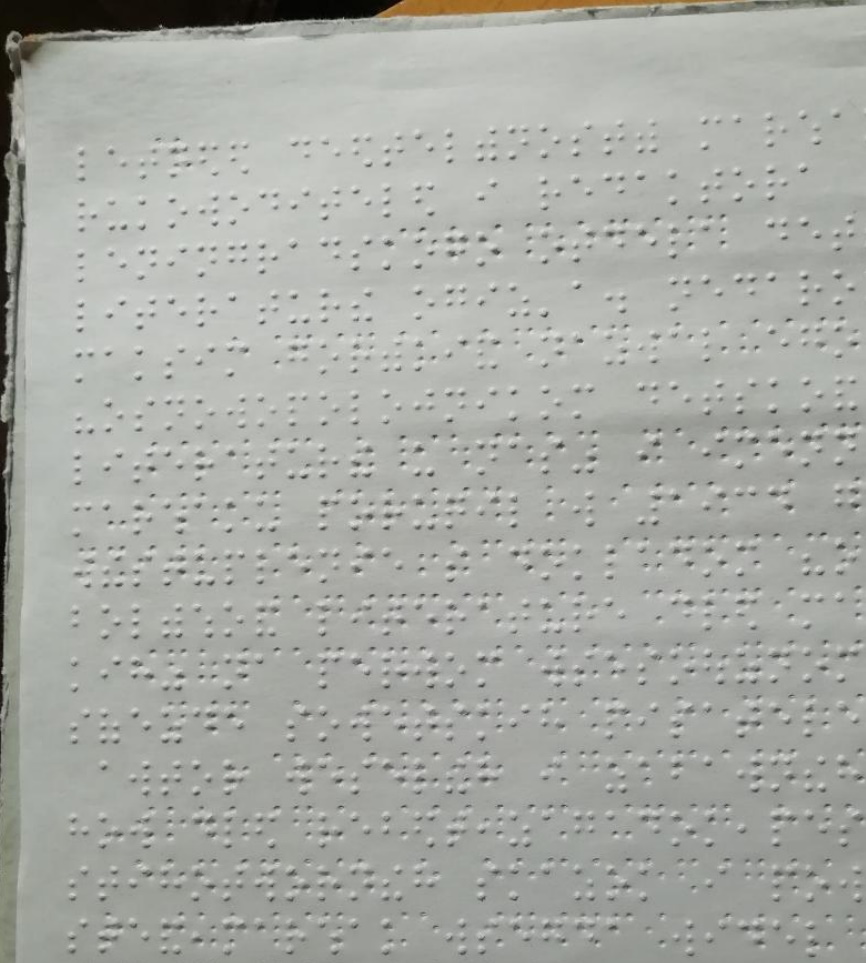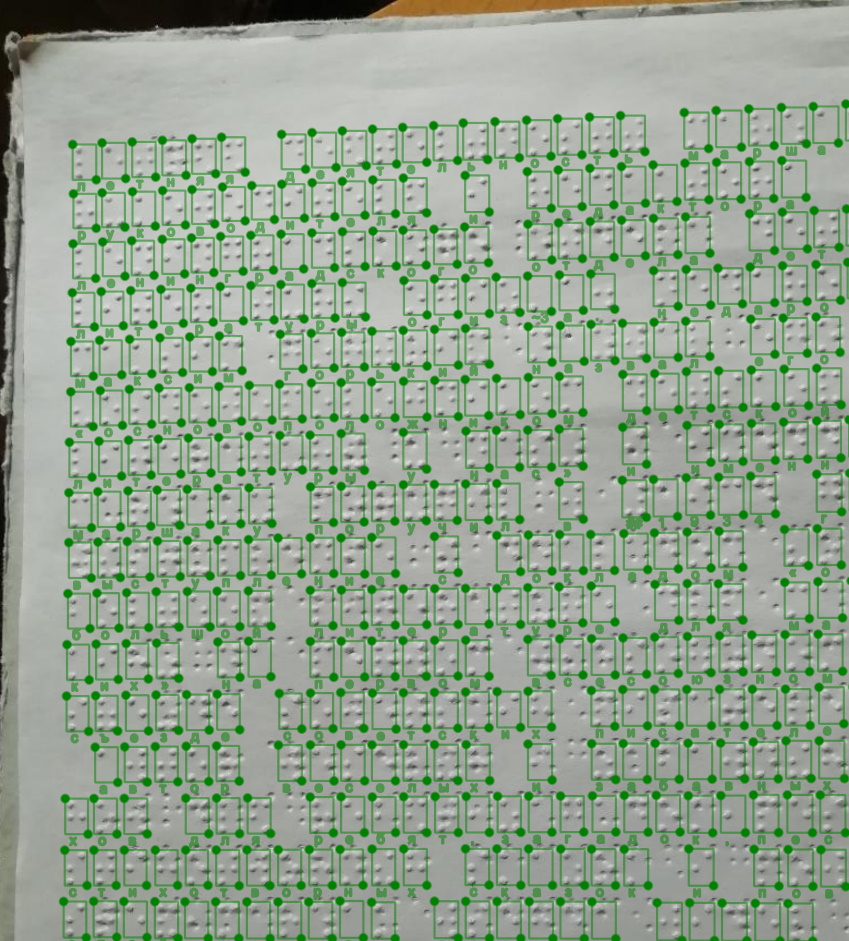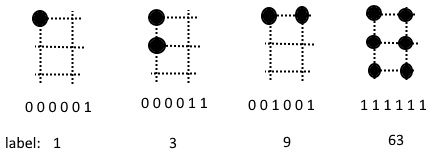This dataset contains labeled photos of Braille texts.
It includes
- 212 pages of two-sided printed Braille books
- 28 handwritten student works
- 44 non-braille photos of various documents found in Internet (as auxiliary negative examples)
- 50 extra pages (printed Braille books and handwritten student works) as a test set (added in v.1.1)
Each group of images has a predefined partition into train, validation and test sets. Appropriate image lists are stored in train.txt, val.txt and test.txt files in corresponding directories:
| folder | train | val | test | total images count |
|---|---|---|---|---|
| books | 169 | 43 | 212 | |
| handwritten | 22 | 6 | 28 | |
| not braille | 44 | 44 | ||
| uploaded | 50 | 50 |
The last group "uploaded" was added in version 1.1 and contains 50 randomly selected imaged, uploaded by users of the Angelina Braille Reader Braille recognition service. So in should be considered as a more relevant test set than subsets of the two former groups.
Each group of images is located in separate folder that contains *.txt files with image file lists and image and annotation files in its sub-folders.
Each line in a list *.txt file is a path to image <image filename>.jpg file, relative to the *.txt file folder.
Image annotations are provided in two formats: CSV and LabelMe JSON. The two formats are provided for convenience and contain similar information. Primarily the annotation was produced using LabelMe tool and than converted to CSV using script (see below).
Each image file <image filename>.jpg has two files <image filename>.csv and <image filename>.json next to it, with CSV and LabelMe annotations respectively. For two-side pages only front side is labeled.
Each row represents bounding box and letter of one Braille character as:
<left>;<top>;<right>;<bottom>;<label>.
<left>;<top>;<right>;<bottom> are the box coordinates scaled to range [0,1], so that point (0,0) correspondes to the left top corner of an image and (1,1) is the bottom right point of an image.
<label> is an integer in range [1,63] denoting Braille dots that present in a symbol. Each of the 6 Braille dots is encoded by a bit in the binary notation of the number. The 1st dot corresponds to the lowest bit, the 6th dot - to the highest bit.
Reading function for this dataset is implemented in read_csv_annotation function.
Label files for LabelMe annotation tool has a JSON format.
Each Braille symbol is labeled as
- corresponding plain text letter or symbol (mainly Russian letter)
- '~number' or '~number~' where number is a digital representation of the Braille symbol (for example '~3456' for digital sign)
- some special marks like '##' for digital sign
Correspondence between Braille symbols and correspondent letters is defined at letters.py file.
Some special symbols can be labeled in several ways. See labeling_synonyms dict.
Various tools for handling labels can be found at label_tools.py file.
Reading function for this dataset is implemented in read_LabelMe_annotation function.
Implementation of PyTorch Dataset is here.
Some scripts for handling this dataset can are provided in src folder.
- File letters.py: dicts with letters, numbers and special chars corresponding Braille symbols in English and Russian;
- File label_tools.py: functions to convert between different representations of Braille symbol:
| representations name | encoding for A symbol | encoding for B symbol | encoding for C symbol | encoding for all braille dots used |
|---|---|---|---|---|
| int encoding | 1 | 3 | 9 | 63 |
| 123 encoding | 1 | 12 | 14 | 123456 |
| 010 encoding | 100000 | 110000 | 100100 | 111111 |
| unicode | ⠁ | ⠃ | ⠉ | ⠿ |
| ascii | A | B | C | = |
- data.py: functions to read CSV and JSON annotation files
- convert_json_to_csv.py: script to convert JSON annotation to CSV
- annotation_demo.py: script to draw annotations on image for demo and debug purposes.
More tools for handling this dataset can be found at Angelina Braille Reader repository.
- 26.11.2020 - release 1.0.
- 29.05.2023 - release 1.1. Test set of 50 random user images added. CSV annotation format and annotation handling scripts added.
Ovodov, Ilya G. "Optical Braille Recognition Using Object Detection Neural Network." Proceedings of the IEEE/CVF International Conference on Computer Vision. 2021.
@inproceedings{ovodov2021optical,
title={Optical Braille Recognition Using Object Detection Neural Network},
author={Ovodov, Ilya G},
booktitle={Proceedings of the IEEE/CVF International Conference on Computer Vision},
pages={1741--1748},
year={2021}
}


